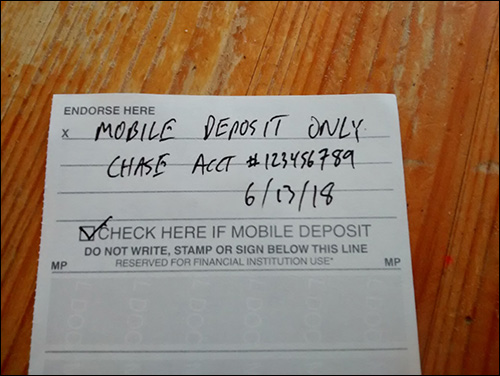
A restrictive endorsement, or indorsement is a mark made on a check to indicate that it has been deposited or cashed. It is a practice of growing importance in the era of electronic check deposits, where the customer often retains physical possession of a paper check after depositing it through an online or mobile service.
The major purpose of such a mark is to prevent fraud, by making it clear to any subsequent bank or business at which a check is presented that the check has already been deposited. Most financial institutions require the customer to mark any checks they deposit through online or mobile deposit services with such an endorsement; otherwise, the deposit will be rejected. This is due in large part to rules contained in Reg CC that assign fraud liability for duplicate deposits to the first bank that received the check, unless the check image bears such a mark.
Whether the correct spelling should be “endorsement” or “indorsement” is sometimes a point of contention, although in practice, the two are used interchangeably. According to the dictionary definition, “indorsement” is the correct term to use when referring to a signature or similar marking on a check — this is the spelling most frequently found in legal documents and official verbiage. However, the verb “endorse” has become such a part of the common vernacular that most banks print it that way on the back of their own checks, and at least publicly, it is the more widely accepted spelling, even if not 100 percent accurate.





